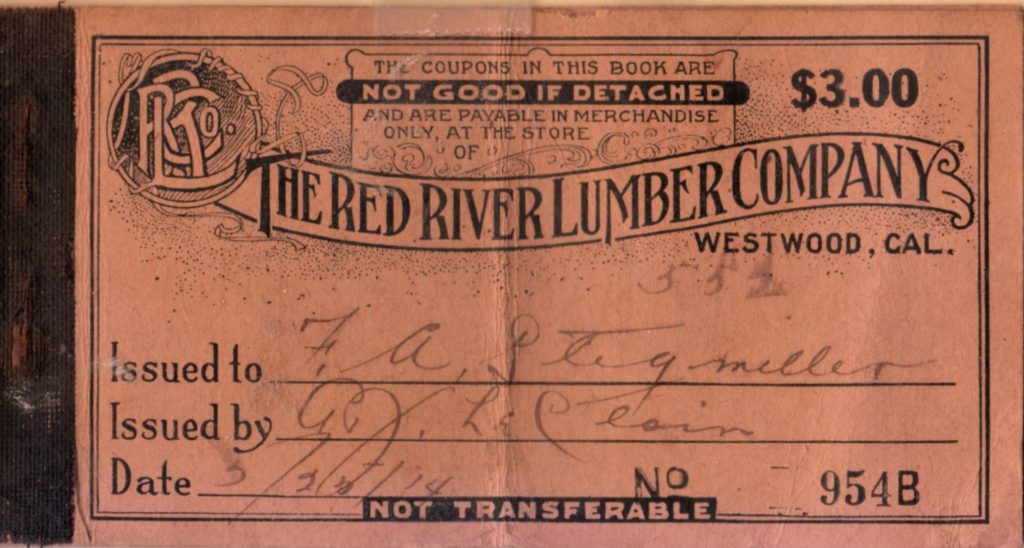
Red River Lumber Company like so many other company towns issued scrip—a form of company currency utilized when an employee received an advance on wages. When an employee received scrip, the amount was deducted from his wages. It was basically worthless as it could only be redeemed in company stores. The usage of scrip declined when employees were issued badges. With an employee badge number, the employee or a member of his family could charge anything they wanted from the company store using that number. Those charges were then deducted from the employee’s paycheck.
In November 1923, John Thomas of the Oakland Tribune wrote a complete description of Red River’s operations at Westwood. As to the company scrip he noted, “The company runs a general merchandise and department store, covering a whole block. Here you can buy anything from a paper of pins to a threshing machine.
“All the employees of the big mill trade here, also dad, grandma, auntie and the kids related to the employees. This is the only store in town. The strange part of it is you don’t need money in this store. You use scrip or paper money—not Uncle Sam’s brand of currency, the kind the banks hand out. You procure books of scrip tickets from the office. These scrip books contain five, ten, twenty-five and fifty cent checks, or tickets, and are good in the big store, also the movie show, newsstands and clubroom. I never tried putting scrip in the plate of the church, as I did not attend.
“These scrip books are transferable to members of the immediate family, that is to pa, ma and the kiddies. Grandma buys her darning cotton, uncle buys his chewing and smoking, sis buys her new slippers and the kiddies their candy and chewing gum all with scrip.”